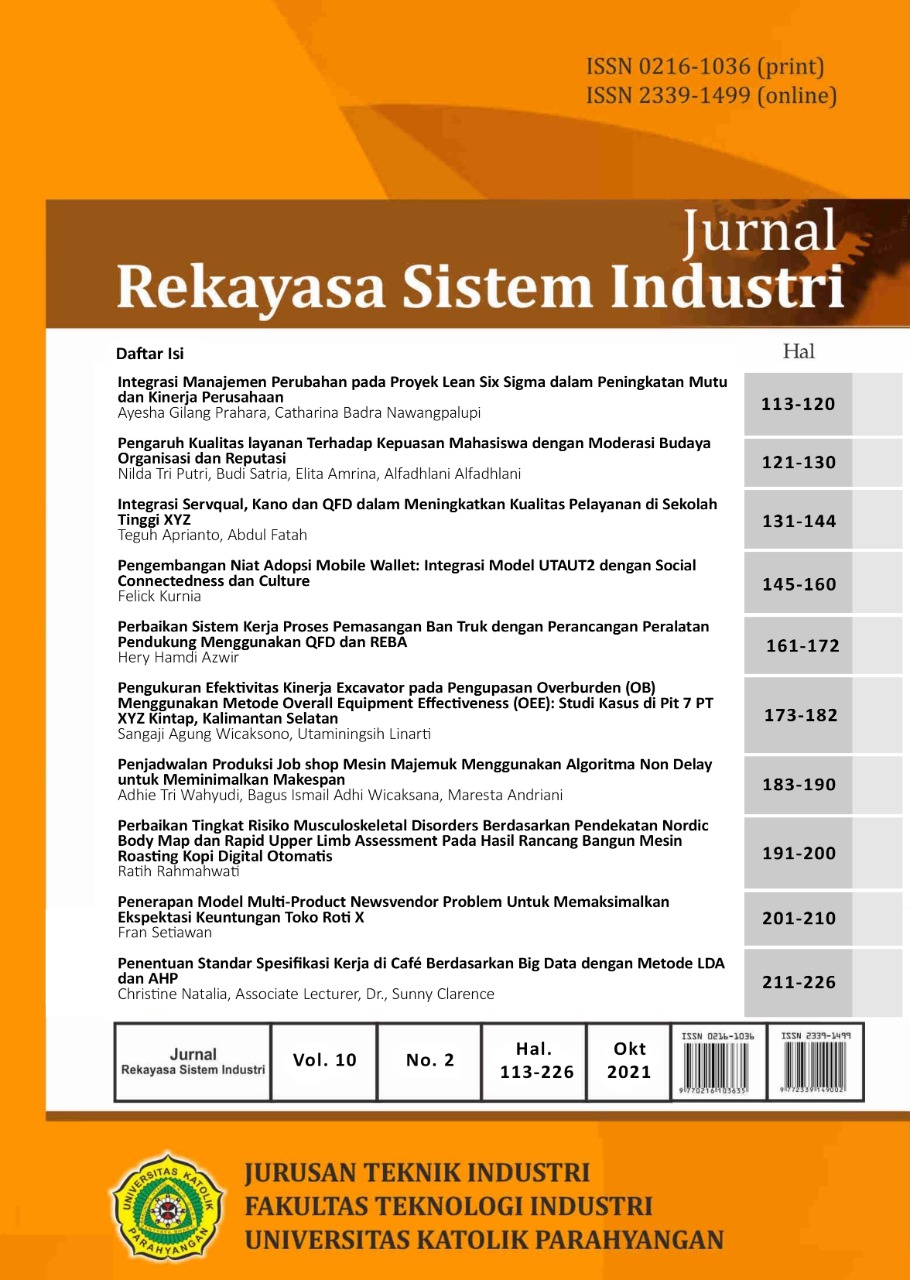Integrasi Servqual, Kano dan QFD dalam Meningkatkan Kualitas Pelayanan di Sekolah Tinggi XYZ
DOI:
https://doi.org/10.26593/jrsi.v10i2.4252.131-144Keywords:
service quality, kano, quality function deploymentAbstract
The service quality at XYZ High School is still not in accordance as expected. There are still queues for registration, payments, length of academic service, parking capacity, lecture room, library access, security, and etc. This study is conducted to find out the service quality of XYZ high school towards the students' satisfaction. The methods used in this research are the integration method of Servqual, Kano and Quality Function Deployment (QFD), using 5 Servqual dimensions, those are Tangible, Reliability, Responsiveness, Assurance, and Empathy. The gap value of all service attributes provided is negative. It means that the service performance still can't fulfill the students' expectation. Based on the integration calculation of the Servqual, Kano and QFD methods, there are 16 of 31 service attributes need to be improved. The easy attribute in accessing information by online can become priority with the important level of 23.17 by constructing an online integrated information to become the priority technical response which is conducted for the improvement with the percentage of 21.04%.
References
Baki, B., Basfirinci, C. S., Cilingir, Z., & Murat AR, I., (2009). An application of integrating SERVQUAL and Kano's model into QFD for logistics services: A case study from Turkey. Asia Pacific Journal of Marketing and Logistics, 21(1), 106-126.
Chen, C. C., & Chuang, M. C. (2008). Integrating the Kano model into a robust design approach to enhance customer satisfaction with product design. International Journal of Production Economics, 114(2), 667-681.
Gupta, P., & Srivastava, R. K. (2012). Integrating SERVQUAL and Kano model into QFD for customer satisfaction of the hotel service industry. MIT International Journal of Mechanical Engineering, 2(1), 45-54.
Hartanto, C.F.B, Rusdarti, & Abdurrahman. (2009). Tantangan Pendidikan Vokasi di Era Revolusi Industri 4.0 dalam Menyiapkan Sumber Daya Manusia yang Unggul. Prosiding Seminar Nasional Pascasarjana UNNES.
Hartono, M., Chuan, T. K., & Peacock, J. B. (2013). Applying kansei engineering, the Kano model and QFD to services. International Journal Services, Economics and Management, 5(3), 256-274.
Jing-Hua, L., Lei, X., & Xiu-Lan, W. (2009). New service development using GAP-based QFD: a mobile telecommunication case. International Journal of Services Technology & Management, 12(2), 146-174.
Oktafiara S, A., Hidayat, W., & L, S., (2017). Effect of Price, Promotion, and Service Quality on Customer Satisfaction (Study at Astra Motor Siliwangi AHASS0002 Workshop Semarang). Journal of Business Administration.
Parasuraman, A., Zeithaml, V. A, & Berry, L. (1985). A Conceptual Model of Service Quality and Implication for Future Research, Journal of Marketing.
Parasuraman, A., Zeithaml, V. A., & Berry, L. L. (1990). Delivering quality service: balancing customer perceptions and expectations. New York: The Free Press.
Russel, R. S. & Taylor, B. W. (2003). Operation Management. New Jersey: Prentice Hall.
Tam, P. T. & Thuy, B. V. (2017). The Industry 4.0 Factor Affecting The Service Quality Of Commercial Banks In Dong Nai Province., European Journal of Accounting Auditing and Finance Research, 5(9), 81-91.
Tjiptono, F. (2011). Strategi Pemasaran. Yogyakarta: Andi Ofset.
Wijaya, T. (2018). Manajemen Kualitas Jasa. Jakarta: PT Indeks.

